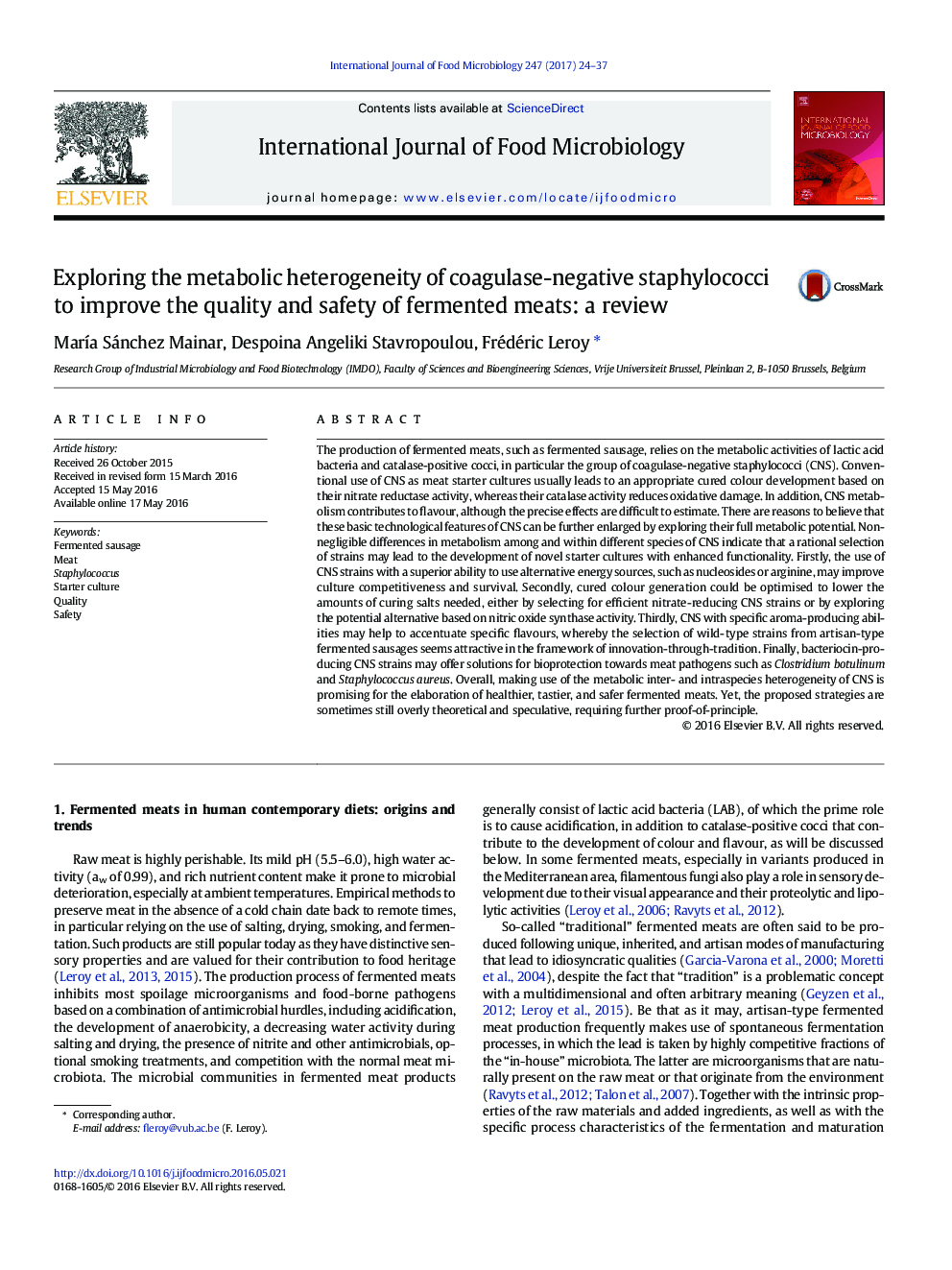| کد مقاله | کد نشریه | سال انتشار | مقاله انگلیسی | نسخه تمام متن |
|---|---|---|---|---|
| 5740823 | 1616536 | 2017 | 14 صفحه PDF | دانلود رایگان |
- Coagulase-negative staphylococci (CNS) display metabolic heterogeneity.
- Metabolic versatility enables ecosystem adaptation, also in fermented meats.
- Potential for starter culture development may go beyond conventional roles of CNS.
- Rational selection may lead to starter cultures with enhanced competitiveness.
- Novel strategies to improve colour and biosafety via CNS need further exploration.
The production of fermented meats, such as fermented sausage, relies on the metabolic activities of lactic acid bacteria and catalase-positive cocci, in particular the group of coagulase-negative staphylococci (CNS). Conventional use of CNS as meat starter cultures usually leads to an appropriate cured colour development based on their nitrate reductase activity, whereas their catalase activity reduces oxidative damage. In addition, CNS metabolism contributes to flavour, although the precise effects are difficult to estimate. There are reasons to believe that these basic technological features of CNS can be further enlarged by exploring their full metabolic potential. Non-negligible differences in metabolism among and within different species of CNS indicate that a rational selection of strains may lead to the development of novel starter cultures with enhanced functionality. Firstly, the use of CNS strains with a superior ability to use alternative energy sources, such as nucleosides or arginine, may improve culture competitiveness and survival. Secondly, cured colour generation could be optimised to lower the amounts of curing salts needed, either by selecting for efficient nitrate-reducing CNS strains or by exploring the potential alternative based on nitric oxide synthase activity. Thirdly, CNS with specific aroma-producing abilities may help to accentuate specific flavours, whereby the selection of wild-type strains from artisan-type fermented sausages seems attractive in the framework of innovation-through-tradition. Finally, bacteriocin-producing CNS strains may offer solutions for bioprotection towards meat pathogens such as Clostridium botulinum and Staphylococcus aureus. Overall, making use of the metabolic inter- and intraspecies heterogeneity of CNS is promising for the elaboration of healthier, tastier, and safer fermented meats. Yet, the proposed strategies are sometimes still overly theoretical and speculative, requiring further proof-of-principle.
Journal: International Journal of Food Microbiology - Volume 247, 17 April 2017, Pages 24-37
